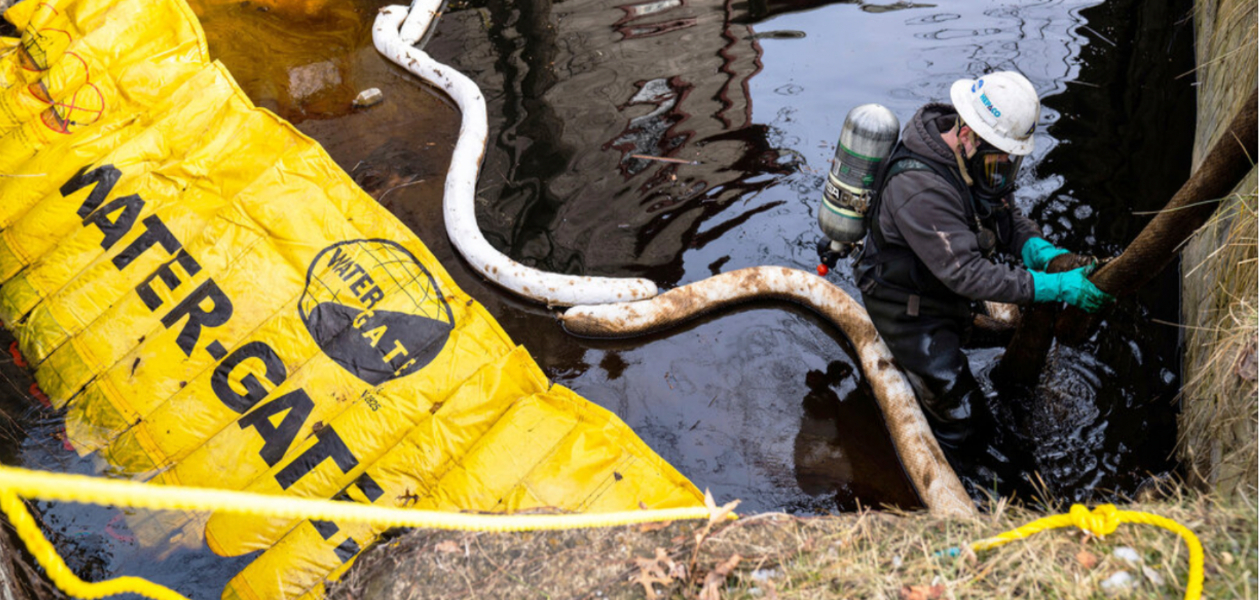
EAST PALESTINE, Ohio—“Give me enough to get out of here and I’m out,” James Figley, 63, a lifelong resident here told Peoples World.
At around 9 p.m. on the evening of February 3, Figley was at home when he heard the first explosion. At that moment he had no idea a freight train operated by Norfolk Southern Rail Road had derailed nearby and exploded into a ball of fire spreading lethal gases in his direction.
“It was terrifying, it was like Armageddon. And the smell was horrific,” Figley, who is known locally by the name Sparrow, recalled in a conversation with Peoples World ten days after the disaster. Figley, whose home is only a few blocks from the site of the blast, recalled multiple explosions of deafening intensity; exactly how many was difficult for him to determine.
“That’s when the panic alarms went off on all the phones. My wife and I got out of there as fast as we could. We ran for our lives,” he said. An enormous fireball was visible through the windows as they got in the car. “I knew we had to get out of there.”
Figley and his son own and operate Sparografix, a print shop that prints a wide variety of materials, from signs for local high school graduations to product labels for small businesses in Northeast Ohio. He has lived in East Palestine (pronounced Pal-es-teen by the locals) all his life. “Trains run through here constantly,” he notes.
Years ago, Sparografix was the first area shop to adopt high-quality color printing equipment, which is still serving the business well. His wife also works in East Palestine. Both places of work, as well as their home, were in the immediate vicinity of the disaster.
“They told everyone within one mile of the wreck to evacuate until further notice,” he recalled. He stayed with his son’s family on the other side of East Palestine.
Figley related the smell was so concerning on the night of the accident that the entire family huddled in a single bedroom. They stuffed blankets under the doorway and covered their mouths and noses with wet cloths in an attempt to filter the acrid smell.
There is concern that areas close to the explosions were not necessarily the ones where people have been exposed to the most harm.
“The smell was actually worse out at my son’s house,” Figley noted. He speculated the explosion jettisoned material so high into the air that it formed a kind of “umbrella” in which the areas closest to the wreck were spared some of the initial fallout while material was more concentrated in an outer ring encircling the wreck site.
Figley and his family didn’t stay long. They ended up fleeing further from East Palestine, spending most of that first night on the road toward Cleveland.
The next day most people who had left were trickling back to their homes to figure out what had happened. “Most people never left the first time,” said Figley of the initial day after the explosion, before a mandatory evacuation was issued.
A black mushroom cloud filled the sky
What he saw was stunning. ‘There was a dark black mushroom cloud filling the sky–did you see the pictures?” he asked.

Figley was shocked beyond belief at the state of the town. To combat the unbelievably intense fires at the wreck site, fire crews doused the fireball with enormous volumes of water. The water had washed back through the town, carrying with it thousands of gallons of toxic chemicals spilled at the wreck site. The toxic residue and smell were everywhere and in everything. In the creeks, he saw flowing water mixed with contaminants that were still on fire in places.
Figley, who previously worked in hazardous materials cleanup and earned OSHA (Occupational Safety and Health Administration) certification to do so, speculated that initial fire crews were unaware of the toxic contents of the wreck and had simply been trying to cool the fire and prevent further explosions.
At his wife’s workplace, workers attempted to survey the damage. They were sent home within a few minutes after developing headaches presumably caused by the intense fumes.
Soon people from all over the state descended upon the town. A much broader, mandatory evacuation was issued. Explosions from the wreck site continued the morning after the derailment. Residents were told there was a risk of more powerful explosions that could level multiple city blocks.
Based on conversations with other people in the town and his own observations, Figley said workers at the site had perforated multiple tankers which were at risk of overheating to the point of explosion. These tankers were drained into a makeshift ditch and then intentionally set on fire to prevent groundwater contamination.
It was several days before Figley felt comfortable enough to return home for good. He described “hazmat people everywhere,”, especially in the nearby creeks.
Representatives from Norfolk Southern, owner of the derailed and damaged freight train, were on the scene early. They had set up stations at a local park as well as at the church Figley attends. He said residents were being offered $1,000 per household plus reimbursement for hotel expenses.
Ten days later “we are still getting that smell in the backdraft from our sewer drain,” Figley reported. He reflected on his community: “For a small town, everybody did the best they could. Even the railroad workers are just trying to do their best.”
Property values in East Palestine had been increasing in recent years, in part due to city dwellers looking for an inexpensive rural lifestyle in the wake of Covid-19 (the coronavirus). Now all that seemed in doubt. “I’ve heard people say they’re never coming back here,” Figley said.
Asked what he plans to do, he declared: “Give me enough to get out of there and I’m out.”










